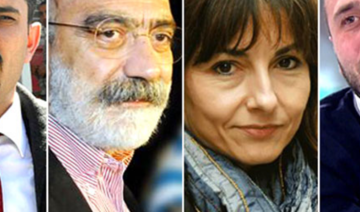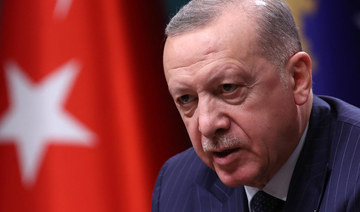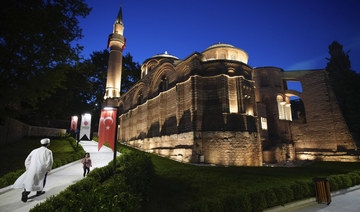ANKARA: Hopes for a tourism recovery in Turkey after the COVID-19 pandemic have been dashed in the wake of Russia’s invasion of Ukraine.
Millions of Russians and Ukrainians fly south to holiday in Turkey each year, but figures are expected to be far lower this year, leading to forecasts of a 30 percent decline in the industry.
With tourism season approaching, southern resorts are already feeling the effects of the invasion and subsequent sanctions on Russia, with cancellations topping 70 percent.
Last year, in a country where tourism represented 10 percent of gross domestic product just before the pandemic, some 4.7 million Russians and 2.1 million Ukrainians visited Turkey, accounting for almost a quarter of the total 24.7 million foreign tourists arriving throughout the year.
The Association of Turkish Travel Agencies was expecting the arrival of 7 million Russians and 2.5 million Ukrainians this year, but expectations are now much lower.
For Turkey’s southern resorts, the high season for Russian tourists normally starts in early May.
Many of the Ukrainian and Russian tourists who travel on cultural and historical trips to Istanbul during winter also canceled their trips this year.
The main opposition Republican People’s Party recently released a report, claiming that the lack of Russian and Ukrainian tourists could cost the Turkish tourism sector about $5 billion.
“If the Ukraine conflict prolongs further after March or April, I don’t expect that Russian and Ukrainian holidaymakers will come this summer. It is completely related to the war psychology. You cannot have a summer holiday abroad if your parents are fighting for your country, or you lost a relative on the battleground,” Bulut Bagci, president of the World Tourism Forum Institute, told Arab News.
Russian and Ukrainian tourists usually head to the resort towns on Turkey’s Mediterranean coast, such as Alanya and Antalya, as well as tourist hot spots like Cappadocia in central Turkey, where charter flights from Ukraine launched two years ago.
If the situation in Ukraine deescalates, it is still likely that Russian tourists, for the most part, will make bookings in Turkey, but problems could also arise due to the heavy financial and payment sanctions placed on Russia.
Following the exclusion of Russia’s seven major banks from the SWIFT system, Visa and Mastercard have blocked the use of Russian credit cards abroad.
Experts said that the ending of SWIFT transfers for Russian citizens has already led to cancellations in Turkey.
“We can make up for some of the losses if we are able to mobilize domestic tourists. However, we should have already taken steps to expand and diversify into different markets rather than being dependent on some countries,” Bagci said.
Goksel Gungor, co-founder of YTM Tourism Villa Aparts in Fethiye, the Mediterranean resort town, warned that domestic tourists would not be able to make up for the loss of Russian and Ukrainian visitors.
“It is the first time that I have filled only 12 percent of the hotel reservations for the summertime. Even during the tense relations with Russia, we managed to compensate the gap with the arrival of the Ukrainian tourists. Now it is not the case. We can’t expect people fighting for their countries to plan their summer holidays,” he told Arab News.
After a Russian fighter jet was shot down by Turkish F-16s along the Turkey-Syria border in 2015, the country’s tourism industry was also hit hard after Russia banned charter tourist flights to Turkey in retaliation.
The war in Ukraine might also influence the holiday preferences of British tourists.
“Several tourists from the UK have not canceled their reservations yet. But they still haven’t confirmed their bookings. Everybody is making their summer plans according to the course of events on the battleground,” Gungor said.
Sector representatives also warned that tourists will avoid selecting destinations close to Ukraine over fears of being near a war zone.
And some Turkish hotel owners think that the growing use of cryptocurrency by Russian holidaymakers will be “unsuitable” for the tourism sector’s financial needs.
“Turkey still doesn’t have a legal framework for the cryptocurrency payments. Therefore, Russian tourists using cryptocurrency would not be life-changing for us,” Gungor said.
The status and frequency of flights from Russia to Turkey, after Airbus and Boeing joined Western sanctions, is also causing headaches for industry professionals.



























